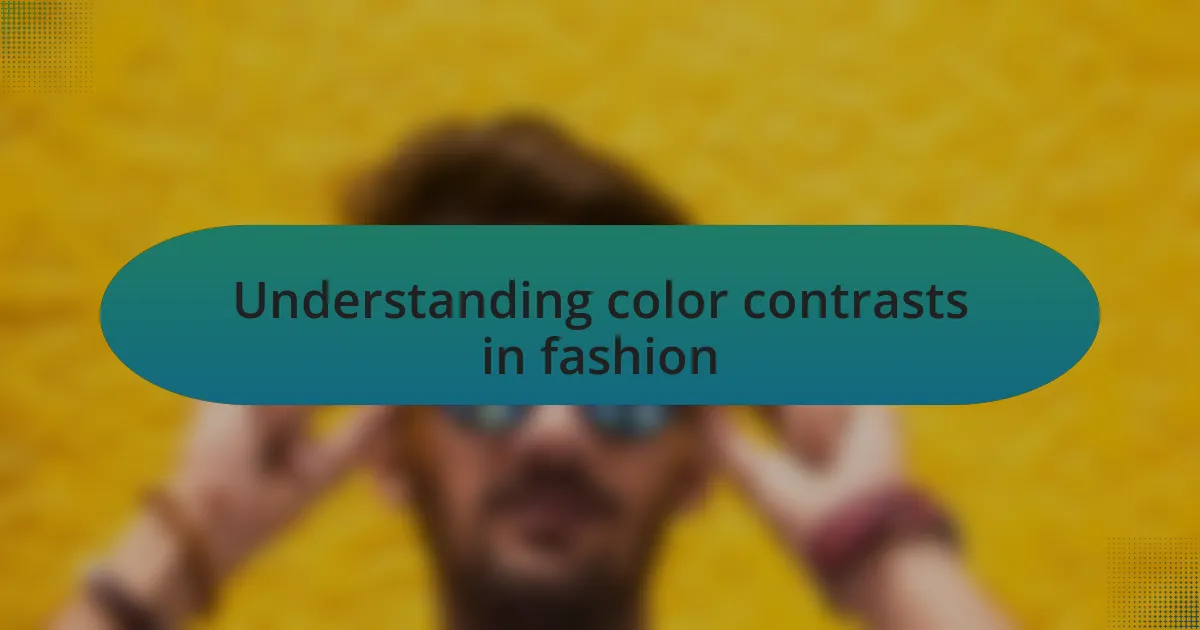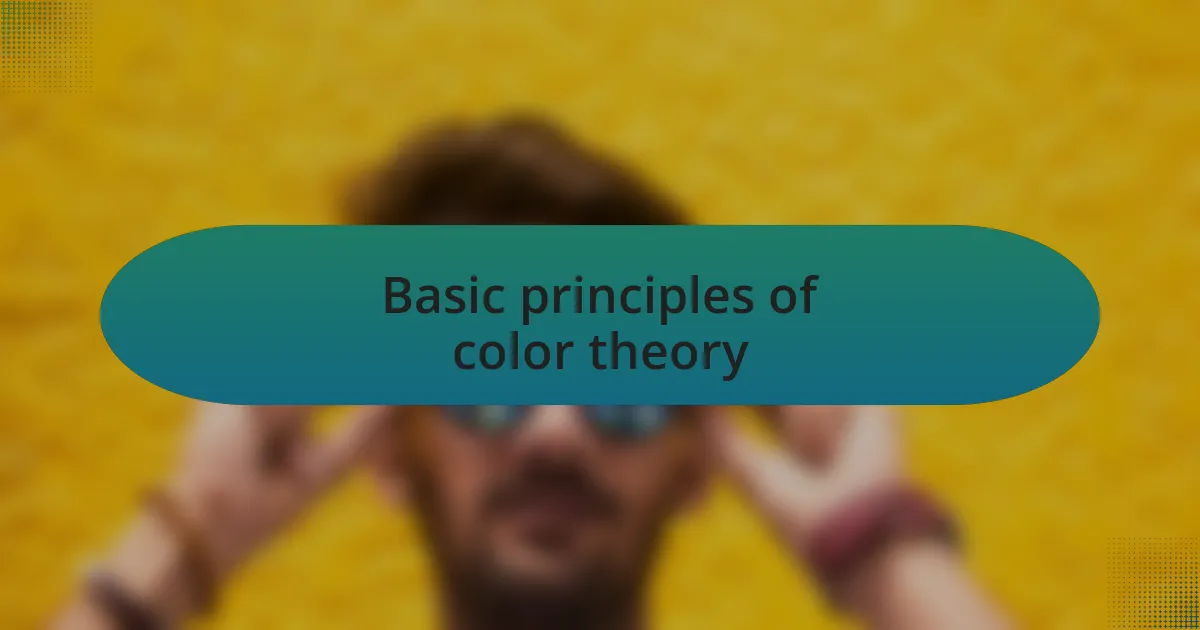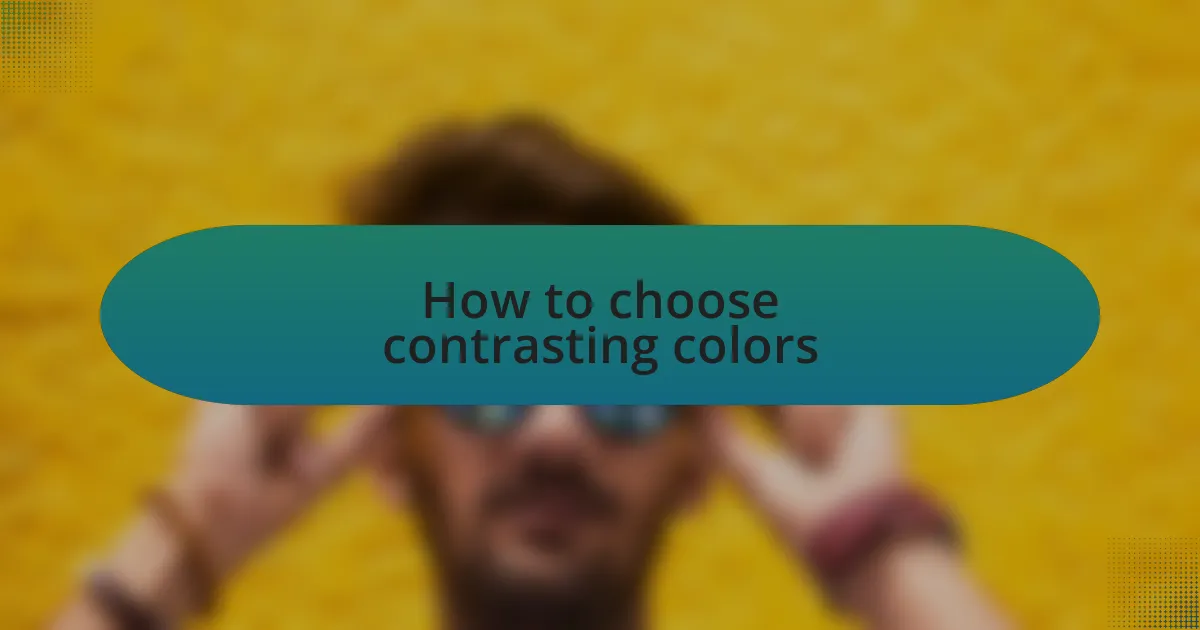Key takeaways:
- Color contrasts significantly enhance outfit perception, creating visual interest and evoking emotions.
- Understanding color theory, including complementary colors and color harmony, is essential for creating appealing and cohesive designs.
- Choosing a focal color simplifies decision-making and allows for intentional contrasting color pairings.
- Personal experiences illustrate how bold color choices can influence mood and spark conversations in fashion settings.

Understanding color contrasts in fashion
Color contrasts in fashion can profoundly influence how an outfit is perceived. For instance, I remember wearing a monochromatic outfit that felt a bit flat until I added vibrant red shoes. Suddenly, the entire look transformed, sparking compliments from friends who noticed the striking combination. Isn’t it fascinating how a single contrasting element can bring an outfit to life?
Understanding the interplay between warm and cool colors is crucial. I often play with this concept in my designs. Imagine a soft pastel dress paired with bold dark accessories; the warmth of the pastel softens the starkness of the dark, creating a balance that draws the eye. This contrast not only creates visual interest but can also evoke emotions—warm colors tend to feel inviting, while cool colors can suggest calmness. Have you ever noticed how certain combinations make you feel empowered or serene?
It’s essential to consider how color contrasts interact with skin tones too. I recall working with a client who hesitated to wear yellow because she believed it clashed with her complexion. When I paired a muted mustard with her warm undertones, it complemented her beautifully while adding depth to her overall look. This experience reminded me of the importance of experimentation in fashion; sometimes the unexpected combinations yield the most striking results.

Basic principles of color theory
Color theory is all about understanding how colors work together and influence perceptions. One fundamental principle is the color wheel, which helps visualize relationships between colors. While experimenting with designs, I’ve always found the complementary colors—those opposite each other on the wheel—to be particularly striking. For example, when I paired a vibrant teal dress with soft coral accessories, it not only made the outfit pop but also created a sense of harmony that stood out at an event.
Another essential aspect is the concept of color harmony. This idea revolves around creating a cohesive color palette that feels pleasing to the eye. I once designed a collection using analogous colors, which sit next to each other on the wheel. The result was a soft, dreamy look that made the garments feel effortlessly chic. It’s amazing how utilizing this principle can evoke specific moods while maintaining an aesthetic balance. Have you ever worn a color combination that just felt “right”? That’s the power of harmony in action.
Additionally, understanding the emotional impact of colors can transform your fashion choices. Personally, I find that wearing certain colors can shift my mood dramatically. For instance, on days when I sport rich burgundy, I feel a surge of confidence and elegance. This connection between color and emotion is worth exploring, as it can guide your fashion decisions and even elevate your self-esteem. What colors make you feel empowered? By delving into color theory, you’re not only enhancing your designs but also forging a deeper connection to the way you present yourself through fashion.

How to choose contrasting colors
To choose contrasting colors effectively, it’s vital to consider the emotional undertones that different shades evoke. For instance, I once decided to pair a deep navy with a bright mustard yellow in a project, and the reaction was overwhelmingly positive. The contrast not only drew eyes but also conveyed a message of energy and sophistication—who knew such a vibrant duo could spark so much conversation?
When selecting contrasting colors, it helps to start with a focal color to build around. I remember using a bold red as my base for an outfit, then incorporating various contrasting shades to elevate the design. This approach allows for creativity while ensuring that the contrast feels intentional. Have you ever felt overwhelmed by choices? Focusing on one dominant color can simplify your decision-making process.
It’s also worthwhile to think about the context in which your colors will be seen. For example, I once designed a summer collection where I cleverly contrasted soft pastels with vibrant hues. The result was striking against the backdrop of a sunlit outdoor runway. How do you want viewers to feel when they see your work? Using contrasting colors thoughtfully can create unforgettable impressions and amplify the overall aesthetic of your design.

Personal experiences with color contrasts
Reflecting on my journey with color contrasts, I recall a time when I experimented with an unexpected pairing of teal and coral in one of my designs. I was both nervous and excited to showcase this combination, but the response was incredible. It not only highlighted the playful nature of fashion but also reminded me how bold choices can evoke feelings of joy and vibrancy—an essential element in captivating an audience.
In another instance, I decided to decorate my workspace with contrasting colors, choosing a bright orange against a deep gray. This simple decision transformed my creative space into an inspiring environment. Every time I entered the room, that initial shock of color boosted my mood, influencing the energy of my designs. Have you ever changed your surroundings based on how color made you feel?
I also learned that contrasting colors can influence personal interactions. During a fashion event, I wore an outfit featuring stark black and white contrasts that drew many compliments. People felt compelled to approach me not just because of the aesthetic appeal, but because the contrast sparked a sense of intrigue, leading to conversations about creativity and inspiration. Isn’t it fascinating how color choices can forge connections?